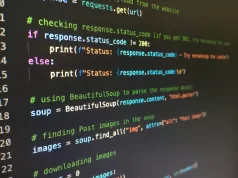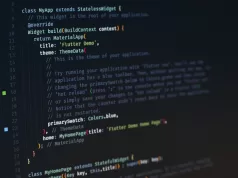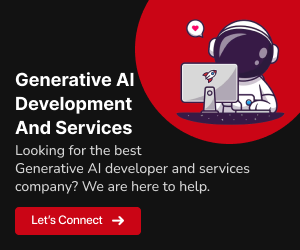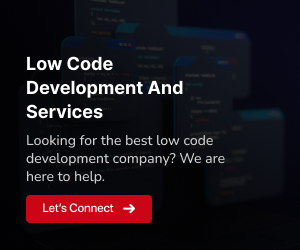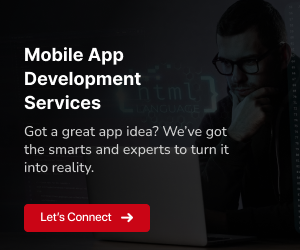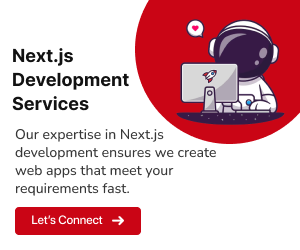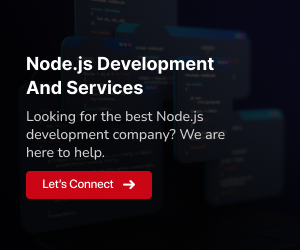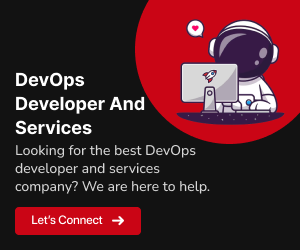Fueling MVP Innovation with Flutter: The Game-Changer for Startups
As we venture into 2024, the demand for swift, cost-effective, and feature-rich app development is greater than ever. Flutter, with its cross-platform capabilities and rapid development workflow, aligns perfectly with these requirements. This revolutionary framework not only expedites the MVP development process but also ensures a consistent, high-quality user experience on both iOS and Android platforms. In this blog, we’ll explore how Flutter’s versatile toolkit and extensive library of widgets empower startups and businesses to build MVPs efficiently, helping them validate their ideas, attract investors, and set the stage for success.
Read more: Why Should Android & iOS App Developers Consider Flutter in 2024
Understanding MVP Development with Flutter
In today’s fast-paced digital landscape, startups face intense competition to bring their innovative ideas to market swiftly. This is where the concept of a Minimum Viable Product (MVP) becomes a strategic imperative.
What is an MVP?
An MVP is the most stripped-down version of your product that retains just enough features to make it usable. It serves as a testing ground for your business idea. Instead of spending months or years developing a full-featured application, startups create an MVP quickly and inexpensively. This allows them to gather crucial feedback, validate assumptions, and iterate based on real-world user interactions.
Why MVP Development Matters
For startups, MVP development offers several significant advantages:
Cost-Effective
Building a full-featured application can be prohibitively expensive. MVP development allows startups to allocate resources efficiently, focusing only on essential features.
Quick Time-to-Market
In the fast-paced tech industry, being first to market can be a game-changer. An MVP allows startups to launch quickly, gaining a competitive edge.
User-Centric
MVP development puts user feedback at the forefront. By releasing a basic version of the product, startups can gather valuable insights into user preferences and pain points.
Risk Mitigation
It minimizes the risk of investing heavily in a product that may not gain traction. If the MVP doesn’t resonate with users, startups can pivot or make informed decisions to improve the product.
Iterative Improvement
Startups can continually enhance and expand the product based on user feedback and market demand, ensuring it aligns with actual needs.
Flutter: An MVP-Ready Framework
Flutter, with its speed of development, cross-platform capabilities, and rich ecosystem, is exceptionally well-suited for MVP development. Startups can leverage Flutter’s advantages to rapidly create MVPs, gather feedback, and refine their ideas efficiently.
In this blog, we’ll explore how Flutter’s features align with MVP development requirements, making it an ideal choice for startups looking to turn their innovative concepts into reality quickly and effectively. We’ll delve into specific benefits, tools, and case studies that demonstrate Flutter’s prowess in the realm of MVP development.
Challenges of MVP Development and How Flutter Overcomes Them
Developing a Minimum Viable Product (MVP) can be a daunting task for startups, but it’s crucial for testing ideas and gaining initial user feedback. However, MVP development is not without its challenges. Here, we’ll explore some common challenges and how Flutter, as a versatile framework, can effectively address them:
1. Limited Resources
Startups often operate on limited budgets and resources. Developing a full-fledged mobile app can strain these constraints. Flutter’s advantage lies in its ability to reduce development costs. With a single codebase for both iOS and Android, it optimizes resource utilization, making MVP development more cost-effective for startups.
2. Speed to Market
Time-to-market is critical for startups to seize opportunities and outpace competitors. Flutter’s hot reload feature allows developers to make real-time changes to the code and see immediate results. This agility accelerates the development process, helping startups launch their MVPs faster and gain a competitive edge.
3. User Feedback
MVPs heavily rely on user feedback for refinement. However, collecting and processing user feedback can be challenging. Flutter streamlines this process by enabling developers to create interactive and user-friendly prototypes. With a polished UI and seamless user experience, collecting valuable feedback becomes more accessible and insightful.
4. Scalability
As MVPs gain traction, scalability becomes a concern. Transitioning from an MVP to a full-scale application can be complex. Flutter provides a seamless path to scalability. Developers can extend the MVP’s functionality while maintaining a consistent user experience across platforms, reducing potential scalability hurdles.
5. Cross-Platform Compatibility
Ensuring your MVP works flawlessly on both iOS and Android devices is essential for maximum user reach. Developing separate codebases for each platform can be time-consuming and costly. Flutter simplifies cross-platform development, allowing you to reach a broader audience with a single codebase while maintaining native-like performance and UI/UX.
6. App Performance
App performance is a critical factor in user satisfaction. Slow or unresponsive MVPs can discourage users. Flutter’s efficient rendering engine, coupled with native-like performance capabilities, enables the development of responsive and performant MVPs. This ensures a smooth user experience that leaves a positive impression.
7. Maintaining Consistency
Consistency in design and functionality is vital for MVPs. Flutter’s rich library of customizable widgets and pre-designed elements promotes design consistency. This helps in creating a cohesive MVP that aligns with your brand identity and user expectations, enhancing its appeal.
8. Evolving Technology
Technology evolves rapidly, and your MVP must keep up. Flutter offers strong community support and regular updates, ensuring your MVP stays compatible with the latest devices and operating systems. This helps future-proof your product and reduces the need for constant reengineering.
By embracing Flutter, startups can effectively navigate these common MVP development challenges. Flutter’s versatility, speed, and cost-effectiveness align with the needs of startups, making it an excellent choice for bringing innovative ideas to life through MVPs.
Read more: Hacks to Improve Flutter App Performance
Flutter’s MVP Benefits for Rapid Prototyping
Developing a Minimum Viable Product (MVP) is all about creating a functional prototype quickly and cost-effectively. Flutter, with its versatile toolkit and innovative features, offers several key benefits that align seamlessly with the needs of MVP development:
1. Rapid Prototyping with Hot Reload
Flutter’s hot reload feature allows developers to make instant code changes and view the results in real-time. This rapid prototyping capability accelerates the development process, enabling startups to iterate quickly and refine their MVPs based on user feedback.
2. Single Codebase, Multiple Platforms
Flutter’s “write once, run anywhere” philosophy simplifies cross-platform development. With a single codebase, you can target both iOS and Android platforms, reducing development time and costs. This unified approach ensures that your MVP reaches a wider audience efficiently.
3. Widgets for Seamless Customization
Flutter offers a rich library of customizable widgets that cater to various design needs. These widgets can be easily tailored to match your MVP’s branding and user interface requirements. This level of customization helps create a polished and professional-looking prototype.
4. Native Performance and Fluid UIs
Flutter delivers native-like performance on both iOS and Android. This ensures that your MVP not only looks great but also runs smoothly, providing users with a seamless experience. Native performance is crucial for garnering positive user feedback during the testing phase.
5. Cost-Effective Development
Startups often operate with limited budgets. Flutter’s cost-effectiveness shines in MVP development. By eliminating the need to maintain separate codebases for iOS and Android, you save both time and resources, making it an ideal choice for cost-conscious startups.
6. User-Centric Approach
Flutter’s user-centric design philosophy empowers developers to focus on creating exceptional user experiences. A well-designed MVP with a smooth and intuitive interface can attract and retain users, making user feedback more valuable for future improvements.
7. Strong Community Support and Extensive Ecosystem
Flutter boasts an active and growing community of developers and enthusiasts. This support network provides access to a wealth of resources, plugins, and packages, making it easier to implement essential MVP features and functionalities. The extensive ecosystem ensures that you have the tools you need at your fingertips.
8. Speed to Market
With Flutter, you can significantly reduce development time, allowing you to get your MVP to market faster. This speed is a strategic advantage in the competitive mobile app landscape, enabling you to seize opportunities and gain early user feedback.
9. Scalability and Future-Proofing
While an MVP starts small, the goal is often to scale the app based on user demand. Flutter’s architecture supports scalability, allowing your app to grow seamlessly as your user base expands. This future-proofing is invaluable for long-term success.
10. Continuous Improvement
Flutter is backed by Google, ensuring ongoing development and enhancements. Your MVP can benefit from future updates, new features, and improvements, keeping your app competitive and aligned with evolving industry standards.
Overall, Flutter’s features and capabilities are tailor-made for MVP development, offering a comprehensive toolkit to turn your innovative ideas into a functional prototype quickly and effectively.
Flutter MVP Development Tools
Creating a Minimum Viable Product (MVP) requires an efficient set of tools to streamline development, enhance functionality, and collect valuable user data. Flutter, with its robust ecosystem, offers various tools and resources that can significantly benefit MVP development:
1. Firebase for Backend Services
Firebase is a comprehensive backend-as-a-service (BaaS) platform that seamlessly integrates with Flutter. It provides essential features such as authentication, real-time database, cloud storage, and cloud functions. Firebase simplifies backend development, allowing startups to focus on core app features and user engagement.
2. Provider Package for State Management
The Provider package is a popular choice for state management in Flutter. It offers a simple and efficient way to manage application state, ensuring that your MVP’s data is organized, responsive, and easy to maintain. Efficient state management is crucial for creating a smooth user experience.
3. Flutter Packages for Enhanced Functionality
Flutter’s package ecosystem is a treasure trove of pre-built solutions for various functionalities. Whether you need maps integration, social media sharing, payment processing, or any other feature, you can find packages that accelerate development and expand your MVP’s capabilities.
4. Testing Libraries for Quality Assurance
Quality assurance is vital for an MVP’s success. Flutter offers testing libraries like Flutter Driver and Mockito, making it easier to conduct unit, widget, and integration tests. Ensuring that your MVP is bug-free and functions as intended is essential for early user adoption.
5. Flutter Plugins for Native Device Access
Flutter’s extensive plugin system allows you to access native device features effortlessly. Whether you need access to the device camera, GPS, sensors, or other hardware components, Flutter plugins provide a bridge between your MVP and the device’s capabilities, enriching your app’s functionality.
6. Material Design and Cupertino Widgets
Flutter offers both Material Design and Cupertino widget sets, allowing you to create platform-specific user interfaces. You can tailor the MVP’s design to match the look and feel of iOS and Android, enhancing user familiarity and comfort.
7. Analytics and User Feedback Tools
Understanding user behavior is crucial for refining your MVP. Integrating analytics tools like Firebase Analytics or tools for user feedback collection can provide valuable insights. Data-driven decisions help prioritize feature development and improvements.
8. Continuous Integration and Deployment (CI/CD) Tools
Implementing CI/CD pipelines ensures that your MVP is continuously tested, built, and deployed. Tools like Codemagic and Bitrise make it easier to automate these processes, reducing the risk of deployment issues and speeding up updates.
9. Documentation and Learning Resources
Flutter’s extensive documentation and a supportive community ensure that you have access to valuable learning resources. Whether you’re a seasoned developer or new to Flutter, these resources can help you make the most of the platform’s capabilities for your MVP.
By leveraging these tools and resources within the Flutter ecosystem, startups can efficiently develop, test, and launch their MVPs, gaining a competitive edge in the market while keeping costs in check.
Read more: Top 15 Flutter App Development Tools To Use In 2024
Celebrating the Future: Flutter’s Journey in 2024 and Beyond
As we step into 2024, Flutter has emerged as the go-to framework for Android and iOS app developers, especially startups. Its remarkable features, rapid development speed, and robust ecosystem make it the ideal choice. Flutter empowers startups to swiftly create Minimum Viable Products (MVPs), test ideas, and gather user feedback efficiently. With a vibrant developer community and extensive resources, Flutter offers a competitive edge in the ever-evolving app development landscape. Choosing Flutter is a strategic move that propels startups toward success in this dynamic era.






